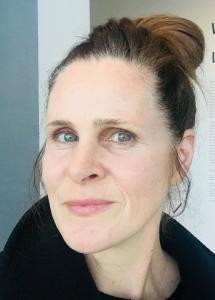Emily Eliza Scott’s research focuses on art and design practices that engage pressing (political) ecological issues, often with the intent to actively transform real-world conditions. More broadly, she is interested in art and environmental justice, art and activism, critical approaches to the built environment, visual cultures of nature, land-based art from the 1960s-present, institutional critique, and the capacity of art to produce non-instrumental forms of sensing and knowing. Prior to joining the UO in 2018, she was a Visiting Professor at the VU University Amsterdam and a Postdoctoral Fellow at the Inst. for the History and Theory of Architecture at the Swiss Federal Inst. of Technology (ETH Zurich) after earning her PhD in contemporary (post-1945) art history, with minors in cultural geography and American art, from UCLA. Her writings have appeared in Art Journal, Art Journal Open, American Art, Third Text, The Avery Review, Field, and Cultural Geographies as well as multiple edited volumes and online journals; she has coedited three volumes, including: The Routledge Companion to Contemporary Art, Visual Culture, and Climate Change, edited with TJ Demos and Subhankar Banerjee (Routledge, 2021), and Critical Landscapes: Art, Space, Politics, edited with Kirsten Swenson (UC Press, 2015). At present, she is developing a monograph on contemporary art that tracks environmental violence as it is writ into land, air, and water. She is also a core participant in two long-term, collaborative, art-research projects: World of Matter (2011-), an international platform on global resource ecologies, and the Los Angeles Urban Rangers (2004-), a group that develops guided hikes, campfire talks, field kits, and other interpretive tools to spark creative explorations of everyday habitats in their home megalopolis and beyond. Her scholarly and artistic work—which she sees as together contributing to the emergent, interdisciplinary field of the environmental arts and humanities—have been supported over the years by grants/awards from Creative Capital, Andrew W. Mellon Foundation, College Art Association, Graham Foundation, American Council of Learned Societies, Luce Foundation, Smithsonian American Art Museum, Annenberg Foundation, Switzer Foundation, Nevada Museum of Art, UO Center for Environmental Futures, and the Oregon Humanities Center. Before entering academia, Scott spent nearly a decade as a National Park Service ranger in Utah and Alaska.
SELECTED PUBLICATIONS
>>> Books
The Routledge Companion to Contemporary Art, Visual Culture, and Climate Change, edited with TJ Demos and Subhankar Banerjee (Routledge, 2021).
Viscosity: Mobilizing Materialities, edited with Ozayr Saloojee and Karen Lutsky (Univ. of Minneapolis Dept. of Architecture, 2019).
Critical Landscapes: Art, Space, Politics, edited with Kirsten Swenson (Univ. of California Press, 2015).
>>> Articles/Book Chapters
"X Marks the Land," Art Journal Open (March 2022).
“The Desert in Fine Grain,” in The Invention of the American Desert, eds. Lyle Massey and James Nisbet (UC Press, 2021), 145-164.
“Leaky Design for a Broken Present," in Broken Nature: Design Takes on Human Survival, ed. Paola Antonelli (Milano Design Triennial, 2019), 50-56.
“Decentering Land Art from the Borderlands,” Art Journal Open (April 2018).
“Archives of the Present-Future: Climate Change and Representational Breakdown,” Avery Review (May 2016).
“Infrastructure Inside Out,” in SCAPE: Toward an Urban Ecology, ed. Kate Orff (Monacelli, 2016), 186-194.
“Feeling in the Dark: Ecology at the Edges of History,” American Art vol. 28, no. 3 (Fall 2014): 14-20.
“Desert Ends,” in Ends of the Earth: Art of the Land to 1974, eds. Philipp Kaiser and Miwon Kwon (MoCA and Prestel, 2012), 67–85.
“Field Effects: Invisible-5's Illumination of Peripheral Geographies,” Art Journal (Winter 2010): 38-47.
SELECTED COURSES
ARH 368 Art, Visual Culture, and Climate Change
ARH 407/507 Architecture in the Expanded Field
ARH 410/510 Land and Environmental Art
ARH 607 Geo-Aesthetics
ENVS 203 Introduction to Environmental Humanities
ENVS 410/510 Unnatural Disasters
ENVS 603 Sizing Up the Anthropocene


